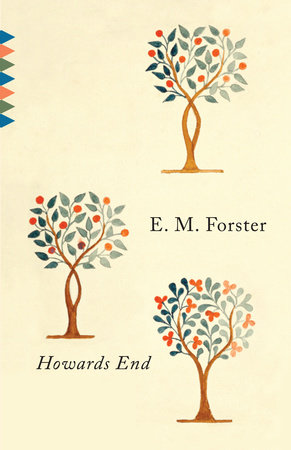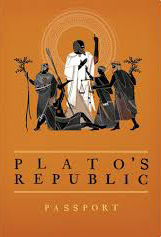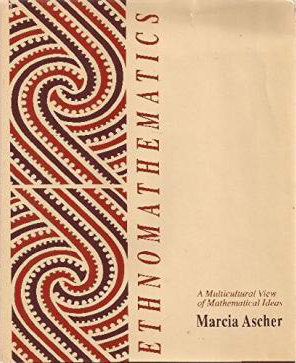Professor of Mathematics, 1985–2016
The three books that most influenced me academically are E. M. Forster’s Howards End, Plato’s Republic, and Marcia Ascher’s Ethnomathematics. They’ve also helped shape my attitude toward social justice, though perhaps in unexpected ways.
M. Forster, Howards End, 1910
When I went to college at the University of Chicago, I was relatively uneducated, and the only subjects taught at my high school with any intellectual rigor were math and chemistry. So I was sure I wanted to be a mathematician or astronomer or physicist. I had marvelous mathematics professors of international renown: Saunders MacLane, Hyman Bass, Irving Kaplansky, Antony Zygmund, Shlomo Sternberg, I. E. Segal, Paul Halmos. I thought that the humanities and social sciences were not intellectually challenging and that any decent scientist could succeed in these subjects if she gave them just a bit of thought. And then I had a Humanities course in which I read E. M. Forster’s 1910 novel Howards End. It was the first serious novel that I got deeply into (I thank my great teacher, the late Herman Sinaiko), and I learned about the class system in England, the way music interacts with the other arts, the way fiction is structured, the way the concrete example of characters can convey universal truths, and above all the depth of the questions that literature addresses. I learned that fiction allows us to be immersed in lives other than our own and to understand them sympathetically. I stayed a math major, but in my senior year I and a classmate did a senior honors project called “Theme and Structure in Howards End.” My encounter with Forster’s novel is why I’m a historian of science, rather than a specialist in mathematics, and why my teaching, research, and thought in general links science and society. And I still quote one of Forster’s key exhortations: “Only connect the prose and the passion, and both shall be exalted.”
(It is worth a footnote here to observe that the 1992 Merchant-Ivory film “Howards End,” with Emma Thompson, Anthony Hopkins, and Helena Bonham Carter, is done with great respect for Forster’s text.)
Plato’s Republic, 4th Century BCE
I first came across Plato when a high-school classmate quoted “The unexamined life is not worth living” from Plato’s Apology in an argument with a teacher who wanted him to stop asking questions. When I read Plato’s Republic in college, I was fascinated by the way he portrayed Socrates not as someone who laid down the law but instead as a questioner, constantly in dialogue with opposing views, where both sides were presented with intellectual rigor and honesty. I was also fascinated by the central role mathematics plays in Plato’s theory of education, where mathematics – taught to be understood, mind you, not as a set of meaningless formulas whose major application is to get high scores on some test – taught exact reasoning. I didn’t buy Plato’s view of the ideal state, but I did accept his illustrating the way to find out how good an argument is: not just to give evidence for it, but to seriously address the contrary view and the strongest arguments for that view as well. After many years of teaching Plato, both the Republic and the Meno, in my “Mathematics, Philosophy, and the ‘Real World’” class, I remain fascinated by the way dialogue clarifies thinking and leads to better conclusions – and also how having both students and teachers raise and address questions is at the heart of all good education.
Marcia Ascher, Ethnomathematics: A Multicultural View of Mathematical Ideas (1991)
As a teacher of the history of mathematics, I have long been aware that modern mathematics has its cultural roots in many civilizations. But until relatively recently, the textbooks and materials for a course in the history of mathematics were largely centered on the mathematics of Europe, with the Greeks as the only serious predecessors. In the 1980s, more accessible materials in English began to appear. But the entire landscape of possible course materials was transformed by Marcia Ascher. I first encountered her research on the mathematics of traditional societies when she visited Harvey Mudd in the late 1980s to lecture about the geometrical knowledge of traditional cultures in Africa, the pre-Columbian Americas, and the South Pacific. Then in 1991, she published her seminal work, Ethnomathematics: A Multicultural View of Mathematical Ideas. This book became the nucleus of the course I taught for twenty-seven years, “Mathematics in Many Cultures.” I learned from her book how my own scholarly approach in my 1988 paper “The Centrality of Mathematics in the History of Western Thought” (from which she quotes) was now being broadened, for a wide English-reading audience, to include a variety of cultures, some small societies like the Malekula of Vanuatu or the Bushoong of Central Africa, and some of the great world civilizations like China, India, and Islam. I learned from her book and her example that virtually every culture in history had some kind of mathematics, and that a culture develops mathematical ideas that solve problems of importance to that culture. I also learned that examples from a variety of cultures can greatly enhance the teaching of mathematical ideas and also empower students from underrepresented groups to learn mathematics. Of course, two and two are four in all cultures, but the way mathematical objects are defined, the notation used, the relative role of visual, numerical, symbolic, and kinesthetic approaches, and what is believed to be most important – all are related to society and culture, in ways that are instructive to mathematicians, teachers, and students. Ascher literally wrote the book on this. I had the privilege of meeting her at a conference in 1998, and I am pleased to thank her again in this little essay.
 Howards End, M. Forster (1910)
Howards End, M. Forster (1910)
 Plato’s Republic, 4th Century BCE
Plato’s Republic, 4th Century BCE
 Ethnomathematics: A Multicultural View of Mathematical Ideas (1991), Marcia Ascher
Ethnomathematics: A Multicultural View of Mathematical Ideas (1991), Marcia Ascher